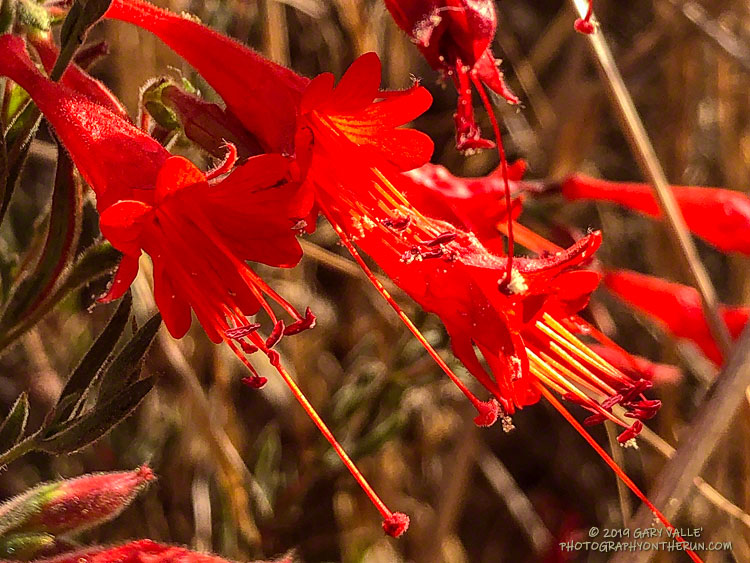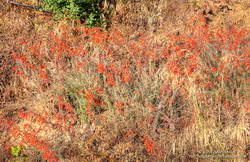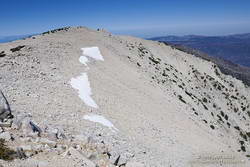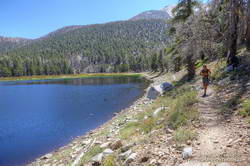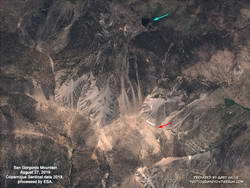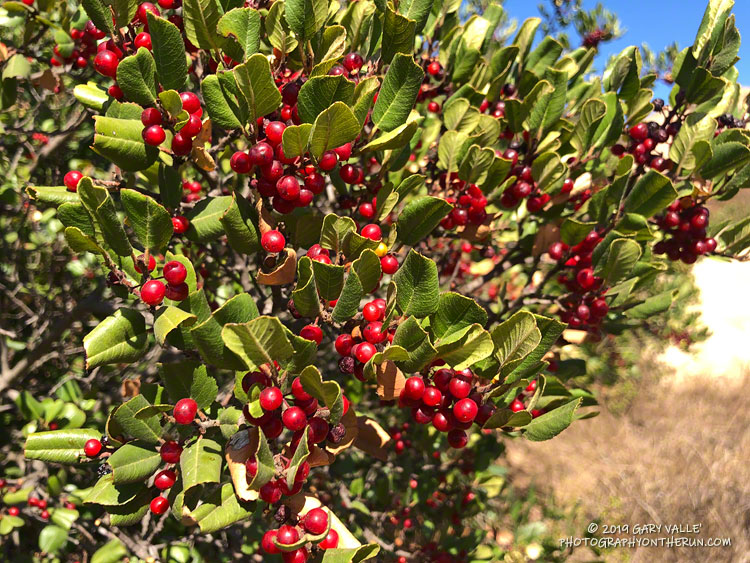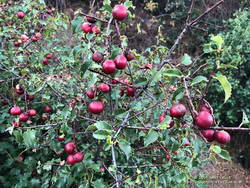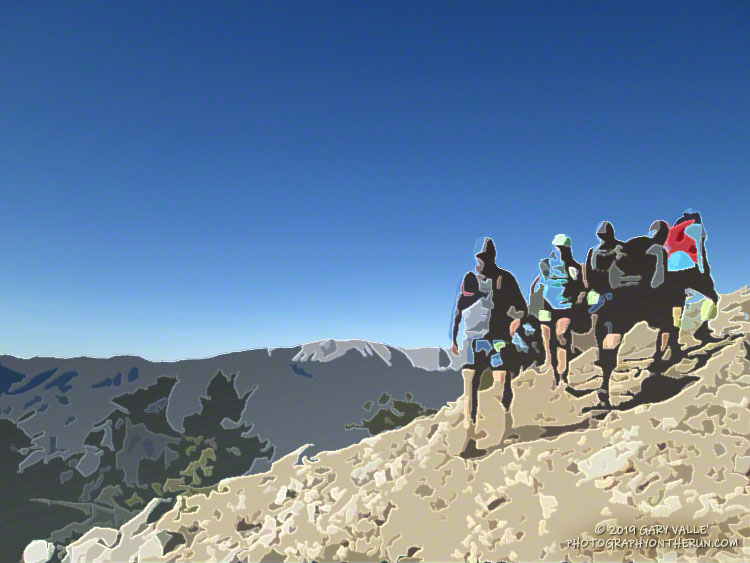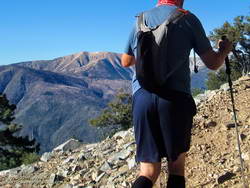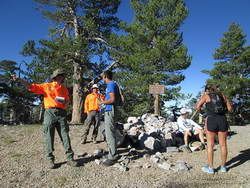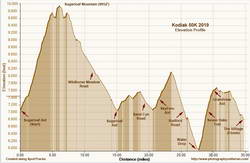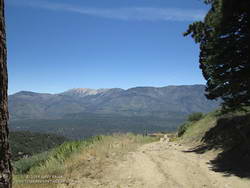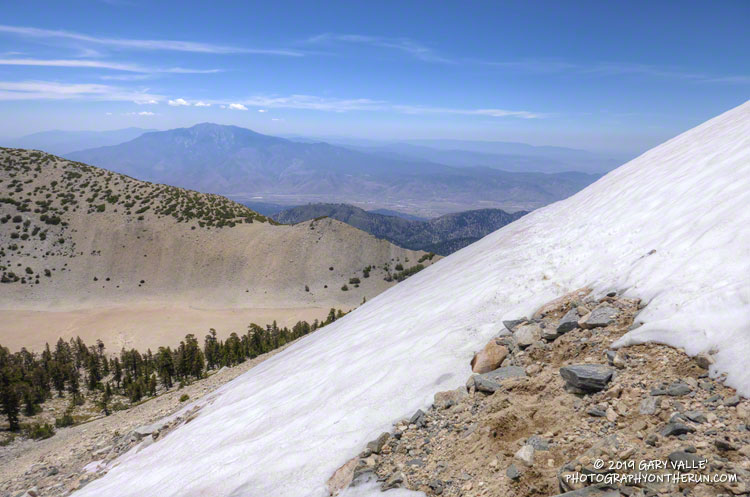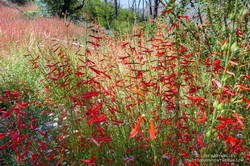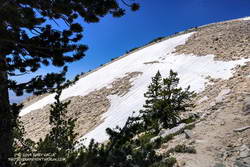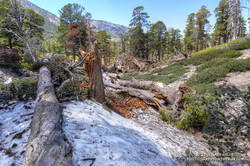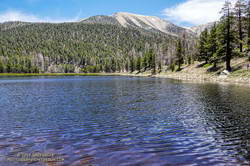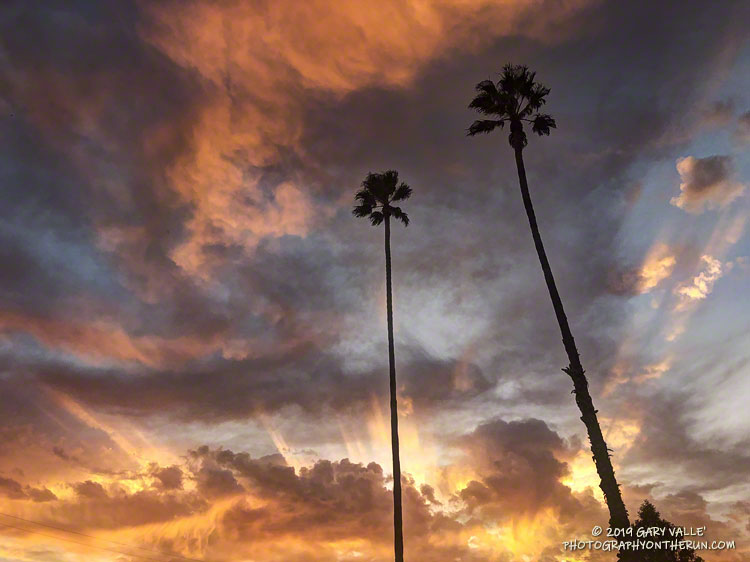
It was about 15 minutes before sunrise when I started my run from the trailhead at the “Top of Reseda.” After running up to Mulholland and partway down Fire Road #30, I could see a batch of tropical-looking clouds to the southeast. These were associated with a cutoff upper-level low that had formed off the coast of Southern California on Halloween.
The behavior of cutoff upper-level lows is difficult to forecast. They are usually separated from the general west to east flow and typically wobble around like a spinning top. A cutoff low can remain off the coast for several days or more. Just where they wobble can dramatically impact the weather. So far this morning, the only effect of this weak low had been to embellish the sunrise with a few clouds, but such lows can be capricious, and this one was no exception.
My first stop was going to be Temescal Peak, and I picked up the pace a bit, curious to see how the clouds and sunrise might look from that viewpoint. Temescal Peak is just off the Backbone Trail, near its junction with Temescal Ridge Fire Road. On a clear day this tiny peak affords an exceptional 360-degree view that can include Mt. Baldy, San Gorgonio Mountain, San Jacinto Peak, Mt. Pinos, Hines Peak, and other area landmarks.
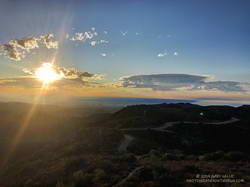
Turning left at the Hub, it didn’t take long to get to Temescal Peak. Westward from the peak, a veil of smoke could be seen in the vicinity of the Maria Fire. Nearby, some of the canyons in the area of the Getty Fire were filled with a smoky haze. In the distance, a few mercurial clouds were scattered across the eastern sky.
At the time, I couldn’t tell if the clouds were approaching or receding, developing or dissipating. Returning to the Hub, I turned left on Eagle Springs Fire Road and began the descent toward Trippet Ranch. On the way, it became clear the clouds were headed my way. By the time I’d run to Trippet Ranch and up to the top of the Musch Trail, the band of clouds covered much of the eastern sky. Virga streamed from the bases of some of the clouds, and I wondered if a few rogue drops might be reaching the ground.
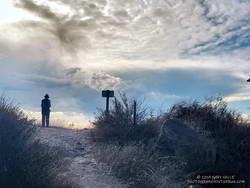
Over the remainder of the run — past Eagle Rock and through Garapito Canyon — the clouds continued to move overhead. A few drops of rain found me near the end of the run, but the most pleasant surprise occurred on the drive home, when showers dampened the streets of the western San Fernando Valley.
There had been no rain in the Los Angeles area this October, and the showers reminded me of the erratic nature of Autumn precipitation in Los Angeles. Even though “normal” rainfall in October at Downtown Los Angeles (USC) is 0.66 inch, no one familiar with L.A. weather is surprised when October is dry. Over 143 years, Downtown Los Angeles has recorded no October rainfall 26 times, 0.10 inch or less 54 times, and 0.25 inch or less 74 times.
The upper-level low continued to influence the day’s weather, and while the low remained mostly offshore and didn’t generate any more showers in the West Valley, it did produce a colorful sunset!

